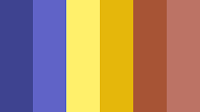Colour Blindness & Data Visualisation
In my background of administration, I've dabbled and experimented with formatting documents. I can happily sit at my desk for hours making word or excel documentation look concise and readable, and I always have so much fun making things "pretty" and appealing to the eye. Whether it be colour schemes and gradiation, fonts or even paragraph spacing, it all came naturally to me.
When I started my Data Analytics course, I knew for sure that the visualisation aspect of it would pique my interest, and boy was I right. Learning Matplotlib has definitely been one of my favourite topics so far. The way python can make incredibly important graphs and figures seemingly out of thin air blew me away. Not to mention how incredibly powerful it is when combined with Pandas!
But with it's power comes great responsibility.
There are a lot of foundational basics regarding the Best Practices and Common Mistakes to matplotlib that are extremely important to understand. Essentially, if abused or not implemented correctly, these customisable options can not only skew data, but make things unreadable to your audience, and even worse, your employer! One such facet of these many important choices, is colour.
A common example of a Data Visualisation "Don't", is having different values set to a very similar (or the same) colour.
As you can see, colour is one of the main ways to help the audience understand the difference between values within a figure. If the colours are too close to each other, the data we are visualising becomes clouded and confusing.
Setting the 'color' of x and y to colours that are more different can make a huge difference by improving readability:
- Matplotlib has a large array of built in Stylesheets to apply to our figures, including some that cater specifically to be readable by people who are colour blind. One of these is 'tableau-colorblind10', as seen below:
- We can also change the marker of each variable, to make things even more distinct from each other without needing to change the colour. There are heaps of different marker types to use.
 |










Comments
Post a Comment